Invisalign® for Teens
Existing Patients
(740) 393-2161
New Patients
(740) 200-4777

Clear aligner therapy has changed how many people approach orthodontic care — offering a discreet, technically refined option that fits into busy lives. Using a series of nearly invisible trays, modern aligner systems guide teeth into better positions with careful, predictable steps. For those who want straightening without traditional brackets and wires, aligners provide an approachable alternative that emphasizes comfort, hygiene, and aesthetics.

Invisalign® for Teens

Invisalign® for Brides

Invisalign® for Travelers
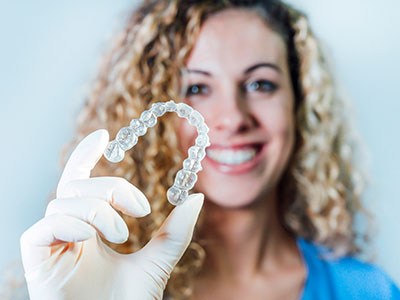
Before & After Photos
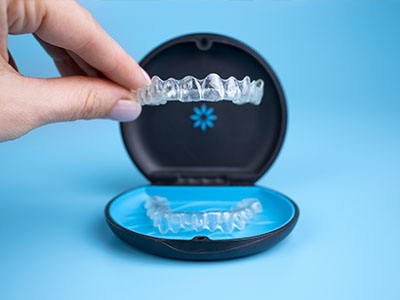
Invisalign® Videos
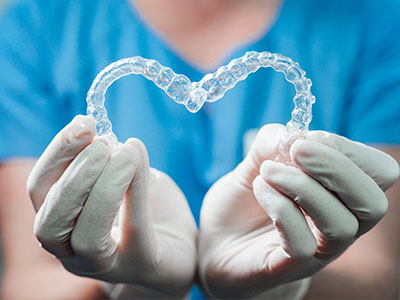
FAQs
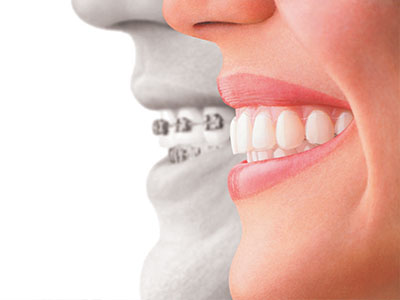
Invisalign® vs Braces
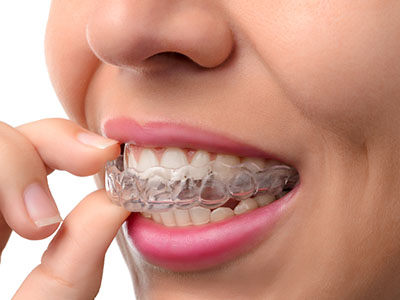
Invisalign® vs Direct-To-Consumer Aligners
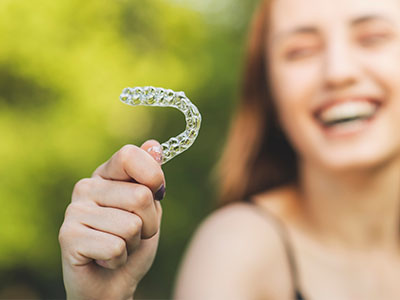
Is Invisalign Right For Me?

Invisalign Costs
Nearly invisible when worn, clear aligners let many people pursue orthodontic care with minimal change to their daily routine. Aligners are designed to be worn for the majority of the day and are removed briefly for eating and oral hygiene, preserving the convenience and comfort patients appreciate. Because they are custom-fit to each arch, modern aligners can deliver predictable tooth movement while remaining subtle in appearance.
Advanced treatment planning begins with a precise digital scan of the mouth and bite. Clinicians use three-dimensional imaging to map tooth positions and design a series of incremental movements that will take the smile from its starting point to the planned outcome. This sequence is translated into a set of custom-made aligners that are switched out at scheduled intervals, each one nudging teeth along the intended path.
Manufacturers analyze large datasets and clinical feedback to refine how aligners move teeth, while dentists and orthodontists apply that technology to individual cases. This collaboration between clinical expertise and engineering produces appliances that aim for efficient, comfortable progression through planned stages. The result is a sequence of aligners that together accomplish the targeted corrections while minimizing unnecessary adjustments.
Because aligners are removable, patients can maintain normal eating habits and clean teeth more easily than with fixed appliances. Good oral hygiene remains essential throughout treatment; simple daily practices such as brushing and flossing after meals help keep enamel and gum tissue healthy while the teeth reposition. Routine visits with the treating clinician ensure the plan is progressing as intended and allow for any necessary refinements.
As you consider aligner therapy, remember that thorough clinical assessment and careful planning are the foundation of a successful process. A proper evaluation addresses bite relationships, tooth movement limits, and long-term stability so that the chosen path aligns with your goals and oral health needs.

The first step is a comprehensive exam where the clinician evaluates tooth alignment, bite, gum health, and any restorative work that could affect movement. This assessment helps determine whether clear aligner therapy is an appropriate option and identifies any preparatory care that may be needed prior to starting.

Aligners should be worn most of the day—about 20–22 hours—and changed according to your clinician’s schedule to ensure proper tooth movement. Their removability makes eating and oral hygiene easier, though it requires careful management of storage and timely placement after meals. Initial discomfort is normal, but the fit soon becomes familiar with minimal impact on speech or daily activities. Regular check-ins allow your dental team to monitor progress, provide new aligners, and make any necessary adjustments to keep your treatment on track.
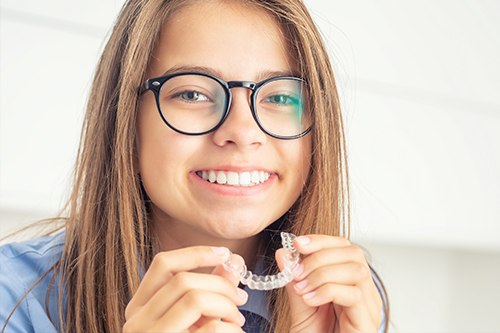
Clear aligners are made from advanced, biocompatible materials that provide gentle, precise tooth movement while remaining discreet. Digital planning allows clinicians to map each stage in 3D, anticipate outcomes, and make adjustments as needed. In some cases, small tooth-colored attachments may be added to help with specific movements. Together, these features ensure effective, predictable results with a subtle appearance.

After completing the planned aligner sequence, clinicians assess alignment, bite, and stability, recommending refinements or small supplemental aligners if needed. Long-term retention is essential—wearing a retainer as directed helps maintain results. Ongoing dental care, including cleanings and gum health monitoring, supports lasting stability, while your dental team provides personalized guidance on post-treatment care and follow-up to keep your smile looking and feeling its best.
Short videos below demonstrate typical aligner steps, patient routines, and the technology behind clear aligner therapy.
*Invisalign® is a registered trademark of Align Technology, Inc.
At Brian Howe DDS, Family Dentistry, we approach clear aligner therapy with an emphasis on careful planning, consistent monitoring, and practical guidance to help you make informed decisions about your smile. If you’re exploring whether aligners are appropriate for your needs, our team can provide a thoughtful clinical evaluation and explain the steps involved.
To learn more about how clear aligners work and whether they fit your goals, please contact us for more information.
Invisalign® is a clear aligner system that moves teeth using a sequence of custom-made, removable trays. Each tray is made from a transparent, biocompatible material and is designed from a digital plan to guide teeth incrementally toward a planned outcome. Because the trays are nearly invisible and removable, they provide an aesthetic and practical alternative to fixed brackets and wires.
Traditional braces rely on bonded brackets and archwires to apply continuous forces, while aligners use timed changes between trays to achieve movement. The removability of aligners makes eating and oral hygiene easier during treatment, though clinical supervision is required to monitor progress. Treatment choices are made based on clinical findings and patient goals to ensure predictable, healthy results.
Good candidates for aligner therapy generally have healthy teeth and gums and realistic expectations about treatment outcomes. Aligners are well suited to many common alignment issues such as crowding, spacing, and mild to moderate bite concerns, and they are used successfully by adults and many adolescents. A thorough clinical exam is necessary to confirm candidacy because complex skeletal or severe bite problems may require additional or alternative approaches.
Compliance is an important part of success, since aligners must be worn most of the day to achieve planned movement. Your clinician will evaluate restorations, periodontal health, and bite relationships before recommending treatment and will outline any preparatory care that may be needed. When aligners are appropriate, a customized plan helps ensure treatment aligns with both functional and cosmetic goals.
The initial evaluation includes a comprehensive clinical exam, dental history review, and imaging to assess tooth positions, bite relationships, and gum health. Digital impressions or intraoral scans are typically taken so a three-dimensional model of the teeth can be used to map the intended tooth movements. This information helps the clinician determine whether aligner therapy alone will meet the treatment objectives or whether adjunctive measures are necessary.
At Brian Howe DDS, Family Dentistry, we combine clinical judgment with digital planning tools to develop a staged treatment sequence that reflects your goals and oral health needs. The proposed plan will describe expected movements, the possible use of attachments or IPR, and recommended monitoring intervals. You will be shown the planned progression so you understand the steps involved and the criteria for evaluating success.
Before starting, the team confirms that any needed restorative or periodontal work is addressed and that you understand the daily wear requirements and follow-up schedule. Consent and clear communication about responsibilities help set realistic expectations and support a smooth treatment experience. If refinements are necessary, the plan can be updated to maintain progress toward the desired outcome.
Patients are usually instructed to wear aligners for the majority of the day, commonly about 20 to 22 hours, removing them only for eating, drinking (except water), and oral care. Each set of trays is designed to be worn for a specific interval that your clinician prescribes, which is often once weekly or every two weeks depending on the prescribed movement and the manufacturing protocol. Adhering to the recommended wear and change schedule is essential for maintaining the treatment timeline and achieving planned results.
Frequent removal or inconsistent wear can slow progress or require adjustments to the plan, so proper use is emphasized during treatment. Regular monitoring appointments allow the clinician to confirm that tooth movement is tracking as expected and to make any necessary refinements. If progress stalls or unexpected issues arise, supplemental trays or modifications can be incorporated to keep the case on track.
Some patients notice a brief change in speech when they first begin wearing aligners, typically a mild lisp that subsides as the tongue adjusts to the trays. This adaptation period is usually short-lived and most people find normal speech returns within a few days to a couple of weeks. Because aligners are thin and precisely fitted, long-term speech impacts are uncommon.
It is normal to experience mild pressure or soreness when starting a new aligner as teeth respond to the programmed movement, and this sensation often eases within a few days. Over-the-counter pain relievers and soft diet choices can help manage temporary discomfort, but persistent or severe pain should be evaluated by your clinician. Routine follow-up visits allow the team to address fitting issues, attachments, or refinements to improve comfort and effectiveness.
Good oral hygiene is essential during aligner therapy because trays fit closely to tooth surfaces and can trap bacteria if teeth are not cleaned before reinsertion. Patients should brush and floss after meals and before putting aligners back in place to reduce plaque buildup and protect enamel and gum health. Aligners themselves should be cleaned daily using a soft toothbrush and lukewarm water or a manufacturer-recommended cleaning solution; hot water can warp the tray material.
When not in use, store aligners in their ventilated case to prevent damage and reduce exposure to contaminants. Avoid eating or drinking anything other than water while wearing trays to prevent staining and deterioration, and follow any specific cleaning guidance provided by your clinician. Regular dental checkups and cleanings remain important to monitor gum health and to support long-term stability of orthodontic results.
Attachments are small, tooth-colored resin bumps bonded to specific teeth to provide better grip and controlled force for certain movements, and they are commonly used with aligner therapy. Interproximal reduction (IPR), sometimes called slenderizing, involves careful removal of small amounts of enamel between teeth to create space for alignment when needed. Both techniques are planned in advance and performed conservatively to achieve predictable outcomes when aligners alone cannot accomplish a movement.
Your clinician will explain the purpose and expected effects of attachments or IPR during the treatment planning discussion and will only recommend those procedures when they support a safer, more effective result. Attachments are removed after treatment and IPR is performed within clinically accepted limits to preserve tooth health. Clear communication about these adjuncts helps patients understand how complex movements are safely managed.
Treatment with aligners requires regular clinical monitoring so progress can be reviewed, new trays dispensed, and any refinements planned. Follow-up intervals vary by case complexity but commonly occur every four to eight weeks; your clinician will recommend a schedule based on your individual plan. These visits provide an opportunity to check fit, assess tooth movement, and address hygiene or compliance questions.
In some cases digital scans or photos are taken during the course of treatment to compare progress against the original plan and to determine if refinements are necessary. Prompt communication with the dental team about concerns such as broken trays, lost attachments, or prolonged discomfort helps avoid delays. Ongoing oversight ensures the treatment remains aligned with both functional requirements and the expected cosmetic outcome.
Long-term stability typically depends on the use of retainers after active aligner therapy to hold teeth in their new positions while surrounding tissues adapt. Retainers may be removable or fixed depending on the case and the clinician’s recommendation, and an initial period of frequent wear is often advised before transitioning to night-time use. Proper retainer care and adherence to the prescribed wear schedule are central to preserving alignment gains.
Continued dental care, including routine cleanings and periodontal monitoring, supports overall oral health and contributes to retaining results. Periodic check-ins with your dental team allow for early detection of any minor movement so timely interventions can be made. The combination of retention protocols and long-term dental maintenance helps protect your investment in a straightened smile.
Our office combines experienced clinicians with digital planning tools to deliver individualized aligner treatment that reflects clinical judgment and patient goals. We emphasize careful evaluation, transparent communication, and consistent monitoring so each plan progresses safely and predictably. Technology such as intraoral scanning and three-dimensional treatment visualization is used to map planned movements and to explain expected outcomes clearly.
The team at Brian Howe DDS, Family Dentistry provides personalized guidance on daily wear, hygiene, and retention so you understand how to support successful results throughout and after treatment. Regular follow-up and the option for refinements are part of our approach to ensure long-term stability and patient satisfaction. If you are considering aligner therapy, our office can provide a thorough evaluation and a treatment plan tailored to your oral health and smile objectives.
Our friendly and knowledgeable team is always ready to assist you. You can reach us by phone at (740) 393-2161 or by using the convenient contact form below. If you submit the form, a member of our staff will respond within 24–48 hours.
Please do not use this form for emergencies or for appointment-related matters.
